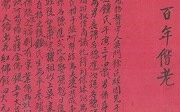| 2019-10-31 |
|
On the Open House Day, the Institute of Taiwan History selected trade letters related to Chinese herbal medicine from the significant archives: Tai-yi Hao Papers of Nagasaki (1889-1959). The exhibition, Kang, Tai, Yi, Shou—Taipei Commercial Letters Related to Chinese Herbal Medicine, featured correspondence between Tai-yi Hao and stores in Taipei. It presented the import process of the herbal medicine, such as American ginseng, edible bird's nest from Thailand and Vietnam, Korean ginseng, snow fungus, and Kanto velvet antler. The medicine had been displayed in shop windows in Dadaocheng in the colonial period, attracting customers to buy for recovering from or preventing illness. Except for the profound exhibitions, our interactive activity was inviting the audience to play a computer game. In this game, the player would be a staff member of Tai-yi Hao. They had to arrange goods in the storehouse and identify the Suzhou codes in time to complete the challenges. Many audiences gave feedback on this game and said “it is intellectual and enjoyable.”   The Exhibition Area
  The Interactive Area
|




